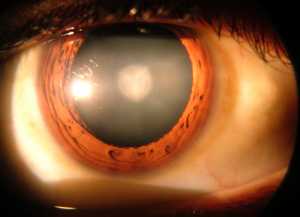26 Nov Majority of Cataract Surgeries Now Performed in Ambulatory Centers
MedicalResearch.com Interview with:
Brian C. Stagg, MD
Department of Ophthalmology and Visual Sciences
University of Michigan Medical School
National Clinician Scholars Program
University of Michigan Institute for Healthcare Policy and Innovation
Joshua D. Stein, MD, MS
Associate Professor
University of Michigan
Department of Ophthalmology and Visual Sciences
Director, Center for Eye Policy and Innovation
Ann Arbor
MedicalResearch.com: What is the background for this study? What are the main findings?
Response: Cataract surgery is one of the most common surgeries in the US. It is typically performed at either hospital outpatient departments (HOPDs) or ambulatory surgery centers (ASCs). ASCs are cheaper and more efficient, but some people believe that HOPDs may be safer for people with co-morbid medical conditions.
We conducted this study to evaluate how the use of ambulatory surgery centers for cataract and other ocular surgeries has changed since 2001. We also wanted to see what factors influenced whether or not a patient had cataract surgery at an ASC (versus a HOPD), and to compare ASC use for cataract surgery with ASC use for other common eye surgeries (glaucoma, cornea, retina, strabismus).
MedicalResearch.com: What should readers take away from your report?
- The proportion of cataract surgeries performed at ASCs went up substantially — from 43% in 2001 to 73% in 2014. There was huge geographic variation in the use of ASCs, ranging from <5% in some communities to >95% in others.
- Younger patients and those with higher income were more likely to have surgery at an ambulatory surgery center.
- Patients who lived in states with “Certificate of Need” laws were less likely to have surgery at an ASC. “Certificate of Need” laws regulate the number of ambulatory care centers allowed to operate.
- There was also a large increase in the number of glaucoma, cornea, retina, and strabismus surgeries performed at ambulatory surgery centers versus HOPDs.
MedicalResearch.com: What recommendations do you have for future research as a result of this study?
Response: More work needs to be done to understand if ambulatory surgery centers are as safe has HOPDs for ocular surgeries. Most of the data to this point suggests that they are for most patients.
Also, we need to do more work to understand the consequences of Certificate of Need laws. It is possible that these laws are increasing costs by limiting access to more affordable ASCs.
MedicalResearch.com: Thank you for your contribution to the MedicalResearch.com community.
Citation:
Note: Content is Not intended as medical advice. Please consult your health care provider regarding your specific medical condition and questions.
[wysija_form id=”1″]
Last Updated on November 26, 2017 by Marie Benz MD FAAD

